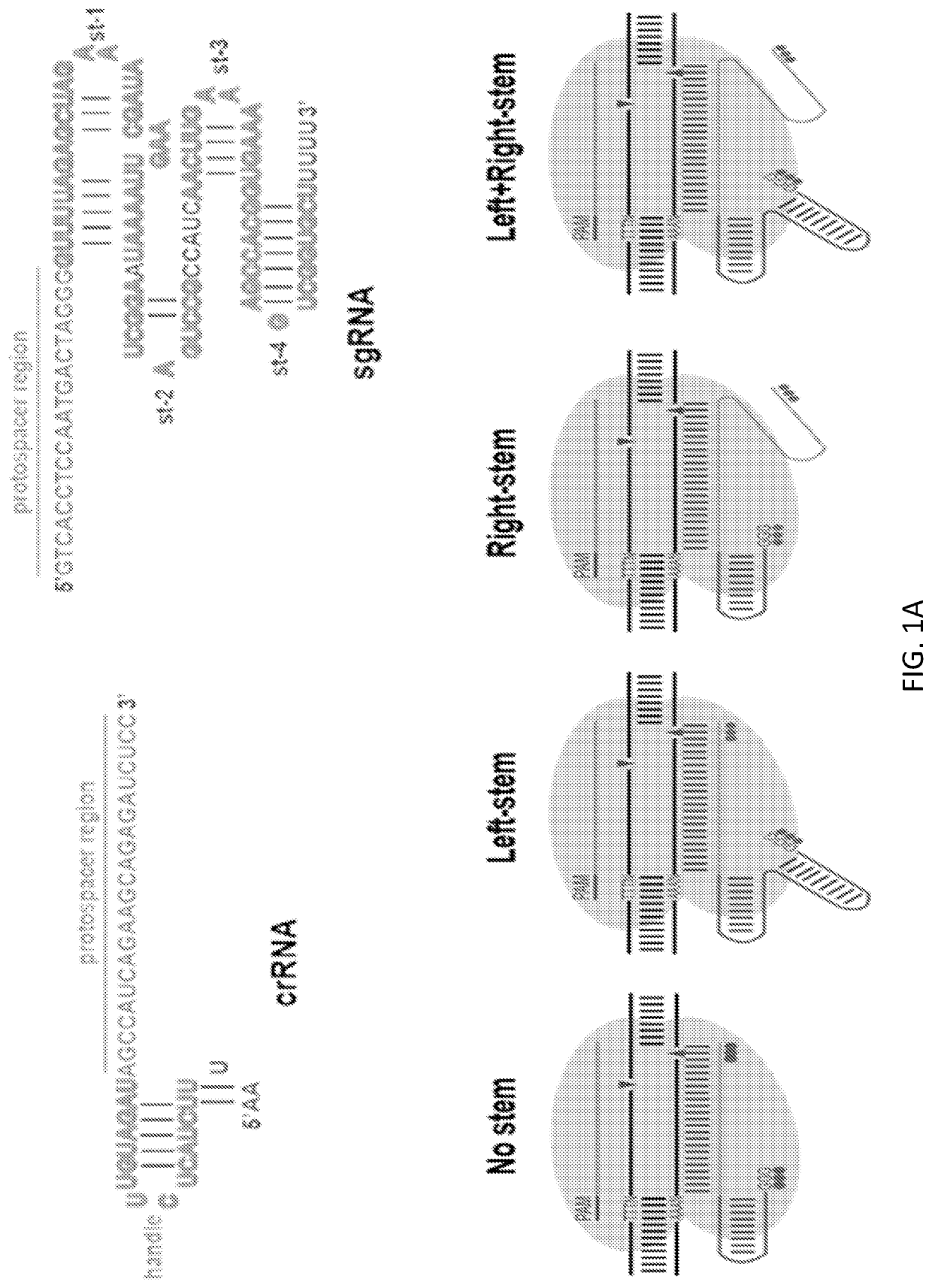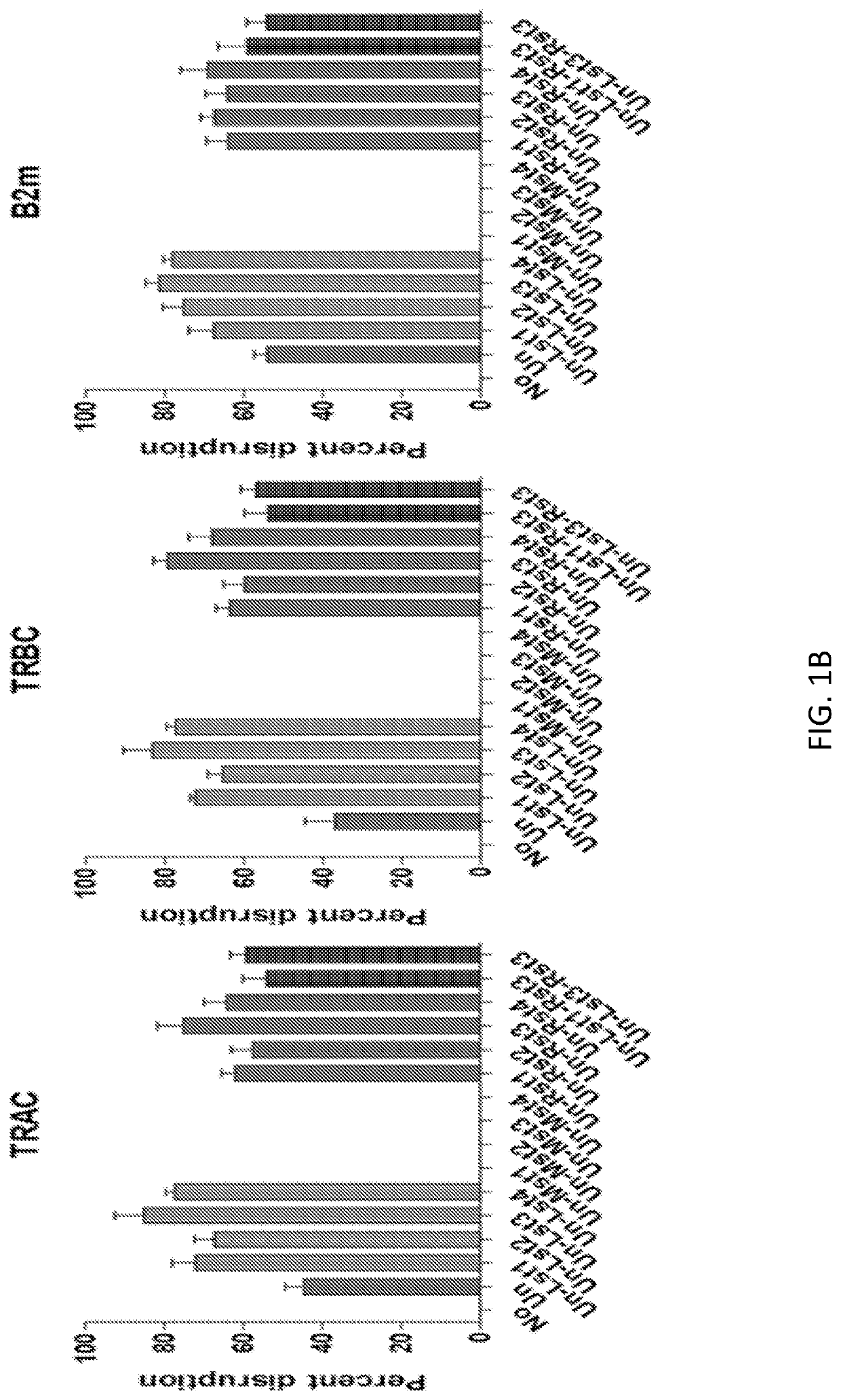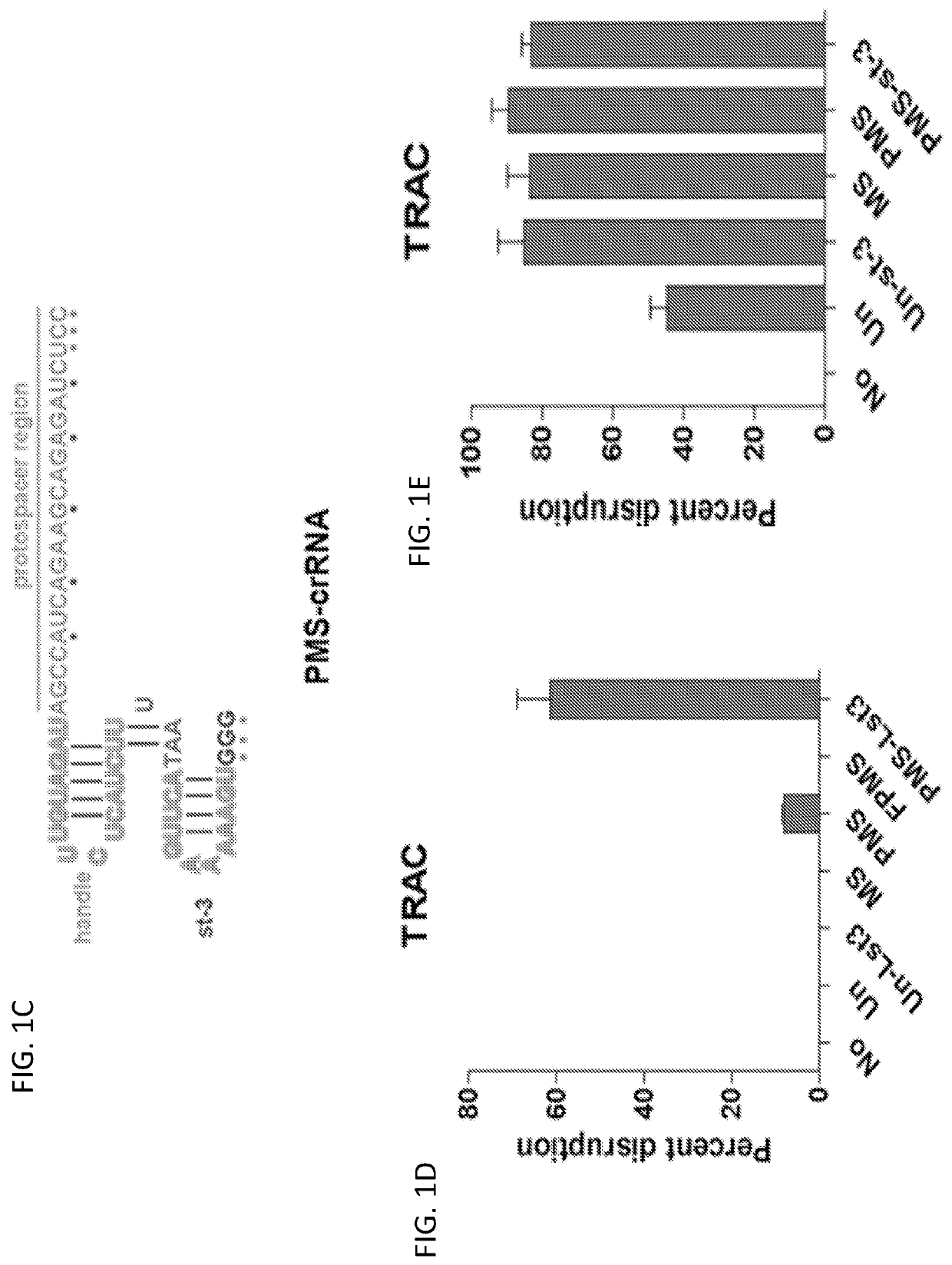Compositions and Methods for Gene Editing in T cells using CRISPR/Cpf1
a technology of t cell and composition, applied in the field of composition and method of gene editing in t cell using crispr/cpf1, can solve the problems of hampered progress in car immunotherapy for cancer and infectious diseases, low efficiency of zfn and talen in t cell, and high cost and time consumption of highly personalized car t cell immunotherapy treatment of patients
- Summary
- Abstract
- Description
- Claims
- Application Information
AI Technical Summary
Benefits of technology
Problems solved by technology
Method used
Image
Examples
experimental examples
[0160]The invention is now described with reference to the following Examples. These Examples are provided for the purpose of illustration only, and the invention is not limited to these Examples, but rather encompasses all variations that are evident as a result of the teachings provided herein.
[0161]The materials and methods employed in these experiments are now described.
[0162]Primary Human Lymphocytes.
[0163]Primary human CD4 and CD8 T cells were isolated from healthy volunteer donors after leukapheresis via negative selection, using RosetteSep kits (Stem Cell Technologies, Vancouver BC, Canada). Primary lymphocytes were stimulated with microbeads coated with CD3 and CD28 stimulatory antibodies (Life Technologies, Grand Island, N.Y., Catalog) as described previously (Barrett et al. (2011) Human Gene Therapy 22(12): 1575-1586). T cells were cryopreserved at day 10 in a solution of 90% fetal calf serum and 10% dimethylsulfoxide (DMSO) at 1×108 cells / vial.
[0164]Propagation of Primar...
example 1
Targeted Mutagenesis Using Stem-Loop crRNA in Primary T Cells
[0177]Previously, Cpf1 proteins from various genera were tested for genome editing efficiency in mammalian cells (Zetsche et al. Cell. 2015; 163(3):759-771). Among the eight different Cpf1 proteins tested, only two proteins, AsCpf1 and LbCpf1, from the Acidaminococcus (As) and Lachnospiraceae (Lb) genera respectively, were found to produce detectable mutations in mammalian cells. Thus, gene-targeting efficiency of AsCpf1 and LbCpf1 was evaluated herein in T cells. The efficiency of CRISPR-mediated genome editing in primary T cells was compared between AsCpf1, LbCpf1 or Cas9, using a protocol previously developed for efficient T cell gene ablation (Ren et al. (2016) Clinical Cancer Research (2016): clincanres-1300). Cas9 or Cpf1 along with guide RNAs were delivered to primary T cells in a single electroporation. Targeted mutagenesis was measured at three endogenous target sites, the TCR α chain constant region (TRAC), the T...
example 2
Targeted Mutagenesis with Chemically Modified Stem-Loop crRNA
[0179]Chemical modification to increase the stability of sgRNAs has been shown to enhance gene-disruption efficiency. To further increase the stability of crRNA, chemically modified crRNAs targeting TRAC were generated herein. It was also determined whether efficient gene disruption could be achieved with a single electroporation, thus decreasing the toxicity caused by a second electroporation. To confirm that the chemical modification did not abolish the crRNA's function, the modified crRNAs were tested with two electroporation protocols. Modification of the tail “AA” nucleotides in the crRNA handle abolished its function, thus indicating that “AA” is indispensable for proper handle structure formation (FIG. 5). To avoid this effect, three “G” residues were added to the handle tail and then 2′-O-methyl 3′phosphorothioation (MS) was performed on the three “Gs” and three tail protospacer nucleotides (FIG. 1C). In this case,...
PUM
| Property | Measurement | Unit |
|---|---|---|
| Composition | aaaaa | aaaaa |
| Structure | aaaaa | aaaaa |
Abstract
Description
Claims
Application Information
 Login to View More
Login to View More - R&D
- Intellectual Property
- Life Sciences
- Materials
- Tech Scout
- Unparalleled Data Quality
- Higher Quality Content
- 60% Fewer Hallucinations
Browse by: Latest US Patents, China's latest patents, Technical Efficacy Thesaurus, Application Domain, Technology Topic, Popular Technical Reports.
© 2025 PatSnap. All rights reserved.Legal|Privacy policy|Modern Slavery Act Transparency Statement|Sitemap|About US| Contact US: help@patsnap.com



